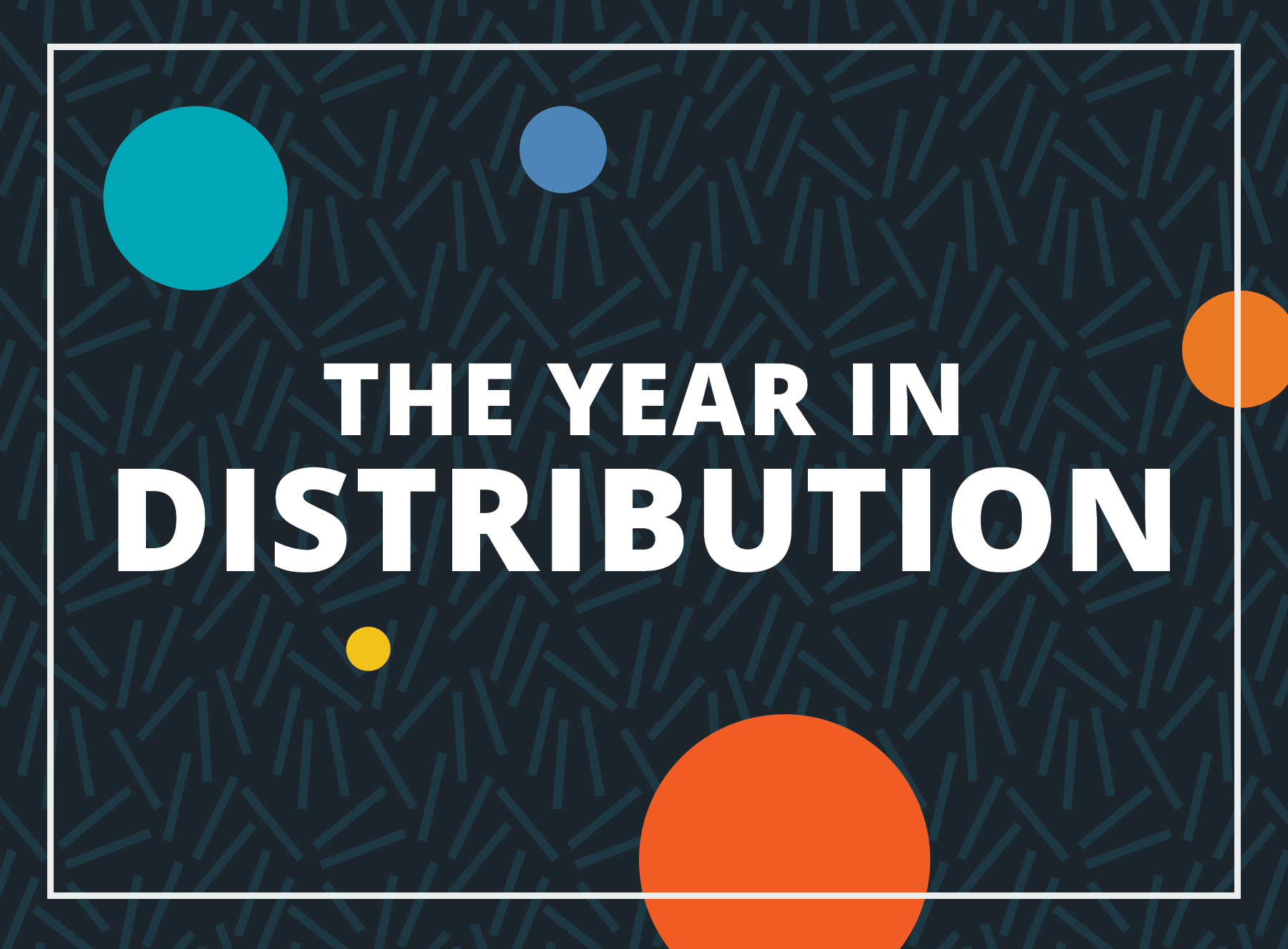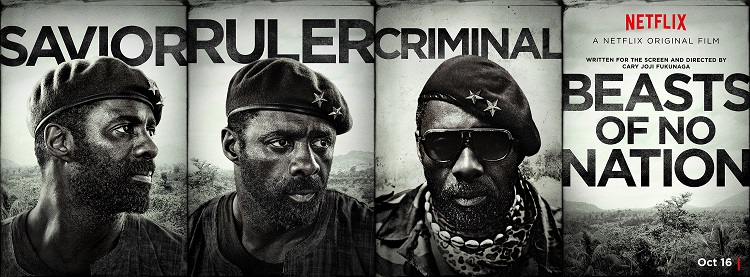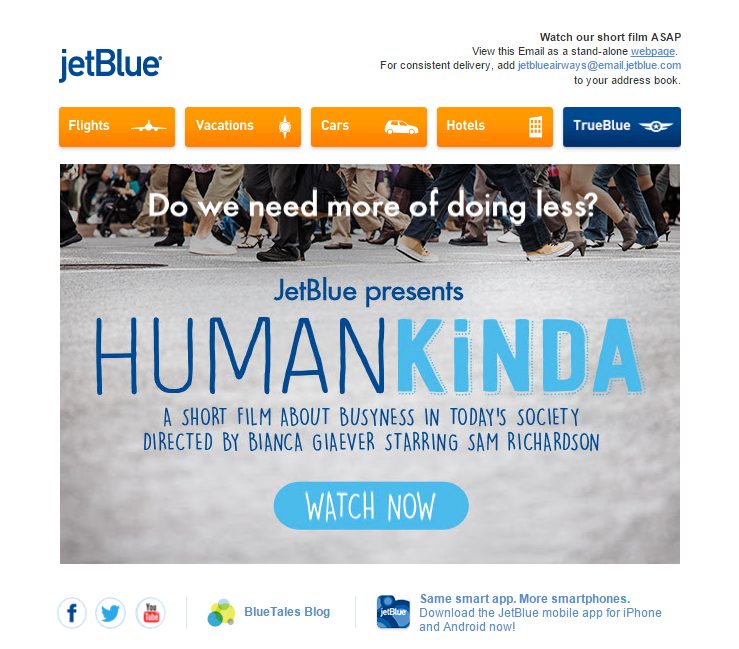The Year in [Creative] Distribution
![The Year in [Creative] Distribution The Year in [Creative] Distribution](https://www.outbrain.com/blog/wp-content/uploads/2015/12/EOY-GIF-DISTRO-blog.gif)
When we think of creativity, the word “distribution” almost certainly doesn’t come to mind (and that probably won’t change by the conclusion of this article), but maybe it should. Creativity, after all, is usually born out of the need to solve a problem, and distribution can definitely pose some problems.
Intuitively, we know creating content is meaningless if it touches no one. We also know a distribution plan is supposed to solve this problem, but the “plan” rarely changes, does it? Use SEO best-practices, post to social channels at some regularly scheduled intervals, consider putting some paid muscle behind it, and experiment with a couple of newer distribution platforms.
Well sometimes, when the stakes are raised, drastic times call for drastic measures.
Let’s look at a few high-profile examples of content producers taking a different approach to spreading the word this year.
The Intercept’s Drone Papers… on Huffington Post?
The Intercept is a small, independent publisher with finite reach. How would it make sure one its most defining stories had the impact it intended? By publishing an excerpt to a major digital native like Huffington Post. It’s easy to see what the Intercept gets out of such an arrangement: exposure to a bigger audience. But for Huffington Post, it provided an opportunity to participate in high-stakes journalism as it looks to further legitimize its own editorial operation as a prestigious news brand.
Beasts of No Nation released to Netflix at same time as theatrical run
Cari Fukunaga’s saga of a child soldier could only be characterized as a flop if box office return was its aim. Which would be hard to argue, given Netflix’s strategic decision to make it available at home on your device at the same time (no numbers on engagement with the film have been released). No, this was Netflix, as it had with the television industry, probing and disrupting. Biting the hand that feeds them? Or merely anticipating and modifying consumer behavior? Only time will tell. For now, it’s compelling to watch.
image courtesy of Netflix
London Calling: The NFL & Yahoo team-up on first digital-only streaming game
For the NFL, working with a global media company like Yahoo represented another step in spreading American Football to other continents. For Yahoo, the game represented a unique advertising opportunity.
Sure, not everyone walked away from the event a clear winner. Though reportedly delivering 10x the number of streams they guaranteed advertisers, Yahoo had to employ a few clever tricks to get there, which probably didn’t impress advertisers much. And for audiences new to the sport, a sloppy contest between the Buffalo Bills and Jacksonville Jaguars, two teams of little interest for even casual fans, probably did little to convert them. All that aside, when you consider the stakes and the technical challenges involved, Yahoo gets points for running a relatively smooth live stream worthy of a TV experience and for awakening audiences to the eventuality that this kind of broadcast may yet soon be the norm.
JetBlue produces and distributes a short film… to your email
Normally when you get an email from an airliner, it’s to let you know about great deals on flights. It’s almost never about putting a movie on your to-do list. The movie definitely isn’t one produced by a brand. And it probably isn’t one you’d want to watch anyway.
JetBlue packed all three rarities into a tidy little email with the tantalizing subject line, “Put this film on your to-do list.” The film in question was the genuinely funny short film Human Kinda, and, yes, it was produced by JetBlue.
In taking one of the oldest tricks in the book — emailing your customers — and applying it to video content instead of yet another deal offer, JetBlue leveraged one of the enduring tropes in effective distribution.
The element of surprise.
Trying to get to Sesame Street? Start with HBO
A show changing homes is hardly news. When that show’s been on the same network for nearly 50 years, that’s a different matter.
Sesame Street moving to HBO was about more than the state of its finances or its role in countless PBS vs. Congress battles or the idea of Big Bird rubbing shoulders with Jon Snow.
The fact is, not even Sesame Street is immune to changes in audience habits – even when the audience in question is barely of speaking age. Smartphones, tablets and streaming is increasingly replacing appointment TV for even young consumers-to-be. After a great run with PBS (which will still air episodes after hit HBO first), Sesame Street is taking the opportunity to produce and distribute its world-class content with these new viewing habits in mind.
Ryan Adams & Taylor Swift, 1989
While his cover version of Taylor Swift’s 1989 undoubtedly does more for Mr. Adams than it does Ms. Swift, this unlikely mashup is one of the better examples of content marketing in 2015. For Mr. Adams, who occupies an amorphous place between indie and mainstream pop culture, covering 1989 (presumably) introduced him to a set of a fans unlikely to have heard of him, thanks in large part to Swift’s explicit approval and enthusiasm over the project. And for Ms. Swift, hearing her songs in this new light re-established a connection to the rootsy lineage she actually shares with Adams; it re-contextualized her, not as a worthy songwriter (she doesn’t need the validation), but quite literally as a songwriter’s songwriter. Which is a pretty cool compliment.
As re-purposed, redistributed content goes, this one was an unqualified success.
Looking for other ways to distribute your content? Learn more about what our Amplify platform can do for your content — and your business.





